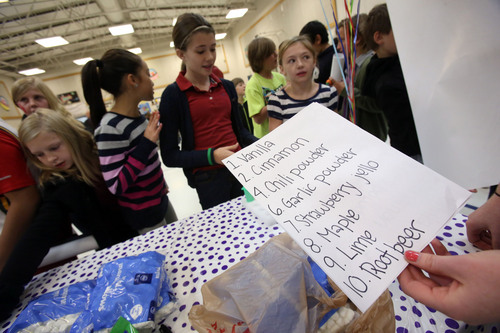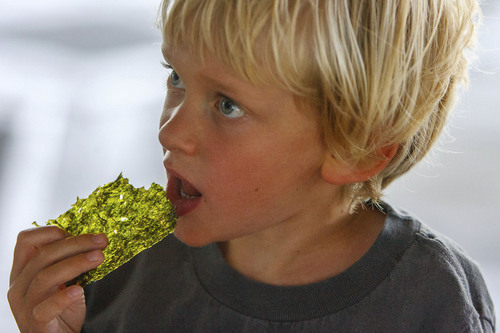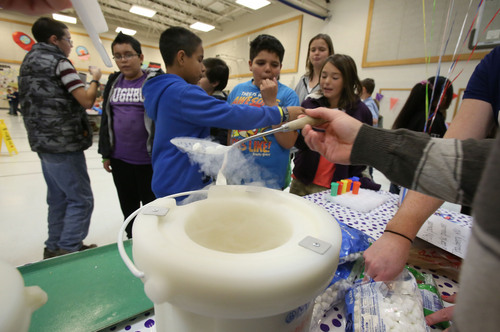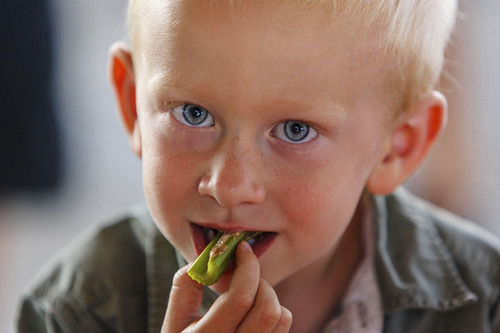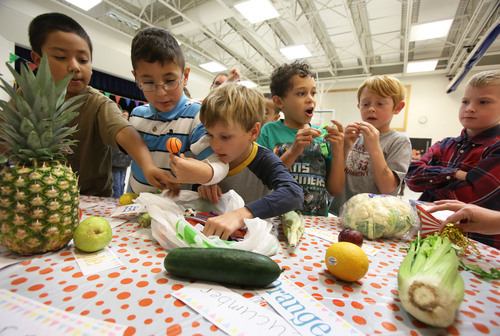This is an archived article that was published on sltrib.com in 2013, and information in the article may be outdated. It is provided only for personal research purposes and may not be reprinted.
Utah schools are among the top in the nation when it comes to serving local fruits, veggies, dairy and baked goods, according to a new survey by the U.S. Department of Agriculture.
Nine Utah school districts told the USDA they serve local food in their school lunches. In those districts, local food chews up 23 percent of the school food budget, or $3.5 million, according to the survey.
That percentage ranked the state at No. 4, behind Nevada at 44 percent, Oregon at 25 percent and Washington at 24 percent. Maryland was No. 5 at 21 percent. Nationally, schools spend $350 million on locally produced food.
The budget data is based on the 2011-2012 school year, and doesn't include three more districts — Canyons, Emery and Washington — that told the USDA they began buying local food last school year.
Twenty-three Utah districts told the USDA they serve no local food and have no plans to do so, and six Utah districts didn't answer the survey and thus aren't listed on the agency's Farm to School website.
Kevin Concannon, undersecretary of the USDA, said the fact that Western states dominate the list probably reflects the region's culture.
"The local food movements are growing in that part of the country even beyond schools, but we're seeing it take off in other parts of the country as well," Concannon said.
The Salt Lake City School District spent the greatest share of its budget on local food — 33 percent. Jordan and Provo districts spent 21 percent of their budgets on local food, according to the survey.
The Farm to School program is part of the Healthy, Hunger-Free Kids Act of 2010, which last year began requiring schools to provide more nutritious meals.
The results have been mixed in Utah and elsewhere. Some districts reported more food waste, and others said students stopped buying school lunch because the portions of meat and bread were downsized. The USDA relented midway through the year, lifting the limits on grains and proteins.
The same law also will require schools next year to replace sugary and fatty foods in vending machines with popcorn, trail mix, natural fruit juice and other healthier options.
Concannon said schools find that students are more apt to eat the food if they know it is grown in their county or region.
"Schools use that to nudge kids," he said.
There are several benefits to eating local, he said. Not only do schools save on food transportation costs, local farmers and the economy benefit. "Those are the people paying for the schools," he said.
In Utah, schools using local food put fruit at the top of the list, with 31 percent serving home-grown apples, peaches and pears. Seventeen percent said they buy milk, 14 percent buy baked goods, 11 percent buy vegetables and 8 percent buy dairy products other than milk.
Meat and poultry are the hardest for schools to source locally, Concannon said, because so much of that distribution is on a national scale.
Concannon said the push for more nutritious food has sprouted gardens at many schools. Midway Elementary in Wasatch County, for example, has one.
Such gardens typically don't provide enough food to feed the school, but they are a "lab environment to remind kids where food comes from," Concannon said.
Deborah Kane, national director of Farm to School, said districts that did not respond to the survey last spring have until Nov. 30 to provide responses to the USDA. The website will be updated as more data is returned, she said.
The six Utah districts that did not respond are Granite, Weber, Carbon, North Sanpete, Wayne and Rich.
The survey report, she said, "is a first look at the trend … but not the final word on Farm to School."
For instance, the Farm to School website incorrectly lists the Salt Lake Arts Academy as a Utah school district. kmoulton@sltrib.com
@KristenMoulton


